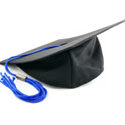Research News
-
How water forms where Earth-like planets are born
In a study that helps to explain the origins of water on Earth, U-M astronomers have found that water vapor can form spontaneously in habitable zones of solar systems.
-
Trackway analysis shows how dinosaurs coped with slippery slopes
U-M researchers and colleagues working in Argentina have discovered how dinosaurs were able to navigate muddy and slippery inclines.
- Plus: Slideshow
-
Record number of U-M inventions reported last year
U-M researchers disclosed 350 new inventions in fiscal year 2009, setting a new record. Despite the state’s economic woes, the university licensed eight new startups in the last fiscal year.
-
Bioengineering of nerve-muscle connection could improve prosthetic hand use for wounded soldiers
Modern tissue engineering developed at the University of Michigan Health System could improve the function of prosthetic hands and possibly restore the sense of touch for injured patients.
-
Preventing sports injuries
U-M has become a leader in helping top athletes and weekend warriors avoid injuries.
-
U-M discovery about biological clocks overturns long-held theory
U-M researchers have found that the current theory of an internal mechanism controlling our sleep is, “frankly, wrong.”
-
Shifts in consumer spending and saving will usher in a new economic era
“In the coming years, U.S. consumers will save more and spend less,” said U-M economist Richard Curtin. “The recovery will be slow and uneven, and it could take a decade or more for consumers to restore their sense of financial security to pre-recession levels.”
Related: Older Americans: How they are faring in the recession?
-
Older Americans: How they are faring in the recession
Older Americans have weathered the financial crisis relatively well, although many now expect to work longer than they did just a year ago, according to a University of Michigan study.
-
Michigan's URC rises in rankings: R&D, high tech climbs
U-M, Michigan State, and Wayne State Universities continue to climb in the rankings of national research clusters. Producing an average of 20 new companies a year, the URC schools also awarded the third largest number of high tech degrees in the country and made a $1.4 billion impact on the Michigan economy.








